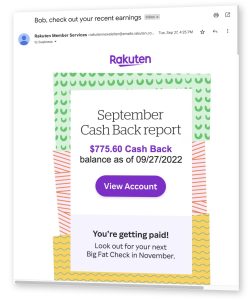Get a Fresh Start: How to Rebuild Credit After Bankruptcy
Are you worried about your credit? Are you scared because the unpaid bills are mounting up? Are you concerned that financial ruin is around the corner. Filing for bankruptcy might help in that it is the first step that will help to eliminate your debts.
Many people shy away from bankruptcy, fearing it will ruin their credit report and lead to complete financial ruin—such isn’t the case. The fact that you have been missing bill payments for a period of time already means that your credit is already impaired. The only way to fix it is to demonstrate that you can consistently meet your bill payments as they come due.

The advantage of doing a bankruptcy is that it will eliminate your debts, so you start your new financial life with a clean slate as you don’t have to struggle to make payments on your old debts… In 2013, more than 100,000 Canadians either opted for filing a consumer proposal in Ontario or a bankruptcy to ease their burden of debt and start anew. You can too. Bankruptcy gives you the opportunity to start fresh, develop good financial habits, and rebuild your credit.
Whether you’ve filed for bankruptcy, or are eager to become financially stable, rebuilding your credit is key. Here’s how you can rebuild your credit score and regain your financial confidence.
Open Checking and Savings Account
Opening new accounts is the first step to starting fresh. To open up a checking and savings accounts at a credit union or bank, consider the following:
- Services (don’t choose a bank with too few, or too many services. Make sure they have expertise in financial stability and can help you with all of your needs.)
- Interest rates and fees
- Recommendations (ask neighbours, family members, and friends about a particular banks’ interest rates, fees, deposit requirements, and service.)
You’ll want to make sure your credit union or bank is understanding of your situation and committed to helping you regain financial security.
Get Secure Credit Card
Once you have declared bankruptcy and managed to save money, consider getting a secured credit card. Unlike an unsecured card, a secured credit card is like a debit card and immediately draws funds from your account. While you’re essentially paying off all balances the moment you purchase an item, credit bureaus acknowledge the purchase and allow it to positively impact your credit score. Here’s what you should do when considering a secured credit card:
- Start with less than $1000 limit. Over time, your credit will improve and your bank will trust you enough to raise the limit.
- Don’t accept large start-up fees. Banks shouldn’t charge you money secured credit cards, but some still try to get away with it. If a bank ever asks for more than a $50 fee, trust your financial security with someone else.
- Follow your transactions. An unsecured credit card won’t help your credit unless a credit bureau acknowledges the purchase.
- Don’t expect immediate cash. Some banks won’t allow a customer to get an unsecured debit card immediately after bankruptcy. If a bank forces you to wait for approval, be patient and save up.
- .
If you’re considering getting a secure credit card, be careful.Dont use all the available funds for the card but keep some money aside for financial emergencies.
Get Copy of Credit Report
You should get a copy of your credit report from both of Canada’s national credit bureaus: Equifax Canada and TransUnion Canada. Your credit report will help you evaluate your credit report and start fresh with finances. Once you’ve obtained both reports, mark your calendar and set a goal to get a new credit report yearly.
Pay Your Bills
Your credit score is effectively a summary of how well you pay your bills. Every time you miss a payment that gets recorded on your score. To rebuild your score you need to maintain a consistent pattern of paying all your bills on time. It could take a few years of consistent payment to restore your credit score.. Unpaid bills rack up late fees and bad credit—use these tips to pay your bills:
- Make a calendar with all due dates
- Check your calendar each morning
- Make payments a week before the deadline
Get into the routine of paying your bills and your credit score will thank you for it.
Start Budgeting
This is perhaps the most important element because you should not spend money that you do not have available
It’s time to start budgeting. First, sit down to determine how much money you need to live every single month. Be strict and only budget in needs, including:
- Housing – You need to pay your rent and/or mortgage every month. If the price of housing is too high, consider moving.
- Food – You must eat to live. When budgeting for food, try to eliminate eating out and incorporate a healthy, more affordable at-home diet.
- Utilities – Factor in all the cash you need for gas, water, and electricity. If the number seems too high, encourage family members to turn off lights and avoid wasting water.
- Communication – In today’s world, nearly everyone needs a phone. Try to find a plan that works for your family and budget.
- Transportation – If walking isn’t realistic as a mode of transportation, you need to factor a car, bus, and/or bike into your budget.
- Medical expenses – Whether or not you have a chronic illness, you should budget for medical purposes in case of emergency.
At the end of the budget process, after deducting your reasonable living expenses from your after tax income you should have a small surplus.
You have what it takes to rebuild your credit score. Escape the weight of financial burden—take the necessary steps to rebuild your credit now.
The post How to Rebuild Credit After Bankruptcy appeared first on McLay Blog Debt Management.
SOURCE: McLay Blog Debt Management – Read entire story here.





















